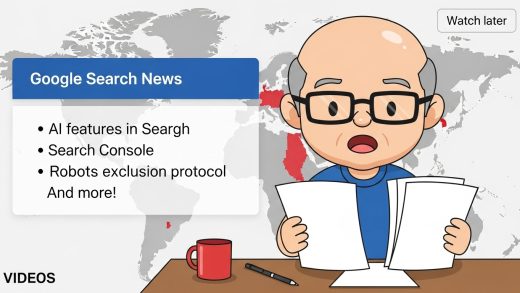For SEOs, one of the biggest differences between agency vs in-house is reporting.
In-House SEO Reporting
In-house, reporting is what you spend anywhere from 12-15% of every day doing. More often than not SEO gets lumped in with other marketing channels that report daily, so you do too. Which likely means you’re in a daily standup meeting where you’re feeling pressure by proxy as the paid teams covetous eyes listen to your numbers, clearly thinking:
“I wish I could do SEO so I could continuously decline daily and tell the boss to be patient.”
It’s why, when you jump into your first in-house role and see the obvious messes, it can fill you with excitement. You might even say, “omg, look at this alt text, it’s terrible, we need to fix the alt text on these images,” and your boss says, “Ok, ping [developer name] and get it prioritized.” And you feel empowered; cocksure; filled with a sense of purpose — and mentally clapping back at the ever-present Imposter Syndrome — thinking, ‘I can’t believe no one’s thought of this before, I must know what I’m doing if the last SEO in this position never thought to fix the alt tags, imagine what else I could do?!’ and you strut into a meeting with the lead developer who asks:
- DEVELOPER: How many images is it and where are they located?
- SEO: All of them; everywhere.

- DEVELOPER: Okay, and do you have a way to programmatically provide each of these with optimized alt text?
- SEO: Well… no.
- DEVELOPER: Will you optimize them with alt text?
- SEO: I mean, I can… but it’d take awhile.

- DEVELOPER: Hm, we can probably develop something, but we’ve never done something like this before, so it’ll probably take 80-100 hours to build an AI that can pull the metadata on the images. Then we can run it by you if the alt text looks optimized or not. How’s that sound?
- SEO: That sounds good, let’s do that.

- DEVELOPER: We could, but since it’ll be 80-100 hours + however much of your time, it’s worth noting this is quite a bit of money, so we’ll need to prioritize this against everything else we’re doing. How much will fixing the alt text earn us in revenue?”
And an unknown force grabs your esophagus and wrings it like a wet towel.
- SEO: I— I don’t know.”

It’s at this point the developer stops taking notes and depending on how well they like you, will either say, “well you find out how much this’ll earn us and then we’ll get it prioritized” or they’ll say, “we’ll put it in the queue, but put it as lower priority” but you can rest assured, lower priority is a bucket of creative solutions to problems that have never been proven. Or in layperson terms: work for work’s sake.
And make no mistake, “I don’t know” is a valid answer and it’s an infinitely better answer than lying. The point is simply to demonstrate “prioritization” comes with a “price.”
and, for what it’s worth, your best course of action in that scenario, is to lobby for teaching the dev team an alt tag best practices going forward — and then if you start to see those URLs with optimized alt text improving, GREAT, use that as your baseline, but I digress…
All of this is part of the process for in-house. And it’s what leads you to becoming an impact-oriented SEO. Where, when you’re watching the numbers daily and continue to feel the accusatory eyes, you figure out what the smallest effort is you can put on the devs to make the biggest possible impact. You may even piggy-back on paid, offering optimizations to reduce CPAs; or fight back against paid, and find their URLs are being indexed, thereby robbing organic of revenue.
Ultimately, you set the KPIs, you understand the internal politics, and you make recommendations that make a difference.
Reporting, in-house, is a daily necessity… which is quite different from working in-agency.
In-Agency SEO Reporting
If you’ve only worked agency, it’s difficult to mention “reporting” without a belabored moan. Reporting is a problem, not a daily North Star.
Say you have 5 clients of varying scopes and level of involvement. Unlike a monthly or quarterly deliverable you can navigate and prioritize, reporting will kick off the 1st of the month regardless of scope/client. If the first of the month happens to be on a weekend, congrats — you’re already behind.

Better yet, reporting has an incredibly stressful half-life. After 7 business days, you’re gambling with the client’s trust. If you have a client that meets with you fortnightly, there’s a real possibility you won’t go over reporting until the middle of the month. But, if you wait until the 14th or 15th to meet with the client and deliver reporting, it’s going to look like either
- A) you’ve “deprioritized” them as a client or
- B) you’re hiding something — which it’ll absolutely look like you are especially if things are good.
But why?
If things look bad, then clients tend to understand your reason for delaying. It gives you time to pivot and strategize to fix the problem. This makes sense. You’re delaying because you need to put more work and thought into it.
Meanwhile, if things look good and you deliver the report “late,” then they’re thinking,
why was this so late? Why didn’t they pound their chest and celebrate this as a win? My boss was hounding me about this report last week because they’re saying revenue is down, it would’ve been meaningful to know that organic is up — unless it’s not up.
-a client on the cusp of a falling out
And, again, I get it.
In an agency environment, reporting is a recurring obstacle that upsets the timing of your monthly, quarterly, and ad hoc tangible deliverables because of the size of the clients. You don’t get to phone it in or deprioritize it just because they’re smaller, that’s how you lose the client.
So why not do Dynamic Reporting?
To an objective on-looker, you may be thinking, “why don’t you just make a dynamic, automatically populated dashboard in Looker Studio or Tableau and streamline the reporting process?” to which I’d remind you:
SEO is a triathlon, not a sprint.

That’s not the cliche, I know. Because the actual cliché for SEOs is flawed. A marathon, not a sprint, implies an endurance test and that is a misnomer that will set you up for failure.
SEO is a triathlon in that it can consist of 3 different athletic events with different skills required for each. Optimizing pages with new metadata may improve rank, CTR, and traffic — and that’s great! Meanwhile, optimizing a page’s on-site copy to more appropriately target the right audience may result in a loss of traffic and visibility as you winnow down the broad, nebulous intent terms, but make up for it with an increase in engagement rate and conversions.
In short:
- Metadata can see rank, CTR, and traffic increase!
- Audience targeted on-page can see rank and traffic decrease; CTR, conversions and CVR increase.
These two types of deliverables (alone) are at odds with one another — don’t even get me started on noindexing, speed recommendations or internal linking.
So a dynamic dashboard won’t solve the problem.
Even if you’re targeting specific URLs or paths of URLs, you need to track the changes for each, which means you’ll need to update each. A dynamic report won’t cut it.
To make matters worse, the “time-to-impact” for these may be different — not only due to them being different deliverables and KPIs, but “delivery” is step 1, “implementation” is step 2. That becomes increasingly important as most monthly reports include a list of what’s been delivered that month, which is not reflective of the month’s organic traffic. So you wind up with this narrative dissonance, i.e.
here’s what we did this month… which has no bearing on the numbers we’re reporting on… Instead, those are probably a result of things that were implemented the previous month which you (the client) probably don’t remember.
This is why reporting in-agency becomes an agonizing intangible redundancy.
This problem is only compounded when it turns out traffic has tanked, then reporting becomes this monkey wrench in your roadmap as you throw out the strategy you built to pivot to something entirely different.

Why not templatize it?
Inevitably, you make a template in an effort to scale, but the reality is every template is made to be sequelized. Once you fall into a pattern of, “I did this last time and it worked” or “this is how its always been done” and you stop iterating, then the output falls flat.
SEO is a marketing discipline, you may invent a Zoom Zoom Mazda campaign but that doesn’t mean you can just apply that to Honda or Acura or even Zoom calls.
You have to keep thinking of new ideas and you’ll create new ideas by constantly asking why you’re doing what you’re doing.
As soon as a deliverable becomes rote, a “box to check” you’ll lose sight of the goal because you’re too focused on getting things done, and not enough on making impacts.

Plus, every client is likely to have different KPIs. While some may overlap, a client may want to increase traffic, but another may want to launch in a new region. While you can boil that down to “increase traffic” in both scenarios, what they’d really need to see is how their geographic traffic is changing/fluctuating, which is not something you’ll simply get from a templatized “organic sessions” chart in Looker Studio.
But okay — you say — that’s a no to dynamic reporting, that’s a no to templates, what’s the fix?
The Solution:
Instead of “Reporting,” Make the Deliverable “Impact Tracking”
This is partly why I spent so much time talking about in-house SEO.
Your reporting, no matter how in depth you may think it is, is never going to be enough for someone working in-house who lives and breathes their company’s numbers every day.
And that’s FINE.
It shouldn’t be. You don’t work in-house — even if the client claims you’re meant to be. You will never have the exhaustive reporting the client has.
So don’t bother.
Instead of pitching the “reporting” deliverable as “reporting,” it should be a line item that reads “Impact Tracking.”

Impact Tracking has a tangible distinction from reporting in that, instead of reporting for reporting’s sake, impact tracking is attached to deliverables. Moreover, it’s dependent on implementation which puts it squarely on the client’s shoulders. Then, you’re not chasing down to ask ‘when something was implemented’ or ‘what’s been done’. Your impact tracker becomes focused and deliberate.
Instead of tracking everything… you’re tracking the thing.
For instance, let’s say you’re doing metadata optimizations next month, list your KPIs and URLs affected by this.
Step 1: Set KPIs for each Deliverable
- Deliverable: Metadata optimizations
- URLs Impacted: 217 URLs under the /[CATEGORY-SUBFOLDER]/
- KPIs:
- Avg. Position,
- CTR,
- # of Ranking KWs,
- Impressions,
- Clicks / Traffic
While you’re at it, determine which of those KPIs should be looked at in a vacuum vs in tandem with others.
Step 2: Establish a Baseline
Monthly reporting is reactive; impact tracking is proactive. You know the KPIs; you know what URLs you’re working on; so create the baseline. For this, you can use Looker Studio to create a dashboard specifically setting this stage.

Instead of scrambling to put together a new reporting tab with what’s happening, build it now to show them the current trajectory. You can create & save a filter for only URLs within that subfolder. Create charts/graphs or tables that specifically address the KPIs you’ve laid out.
Even better, you can set the “Date Range” for the specific table so if something goes live on a 17th or 18th, you’re no longer futzing with the entire report. Set the date for the date it goes live!
Ultimately, what this does is put you in the driver’s seat. Now you can report on a deliverable each month and the question is not:
- Client: What have you done for me?
Instead the question is:
- SEO: Have you implemented?
This also makes it good when traffic is down. Instead of scrambling to diagnose a problem, you’re set up to report on the problem. It becomes an active ticking time bomb and it’s likely, they’re hearing about traffic being down DAILY, so this arms the client with much needed reporting material to say, “this category should improve.”
Closing Thoughts: Less Reporting, More Tracking
If I can leave with one thing, it’s this. Don’t get formulaic, complacent or rote. Repeatable tasks are good. Process is good. But, at the end of the day, there’s no one size fits all for every company — especially when it comes to SEO. SEO has best practices, but it’s 70% data-driven, 30% artistic invention.
That Zoom, Zoom campaign wasn’t an SEO play by any stretch, but it’s worth thinking about, because would it be as successful for a similar brand? Honda? Toyota? Ultimately, we don’t know, but in my personal opinion, I think there’s something to be said for the repetitious ‘M’ and ‘Z’ sounds in Zoom and Mazda that aids in making it memorable.
Reporting is important, but the fact that I some people are operating with GA4 and others with Adobe alone provides you all the info you need to recognize you can’t do the same thing for every client. Recycle the process, but invent the report.



